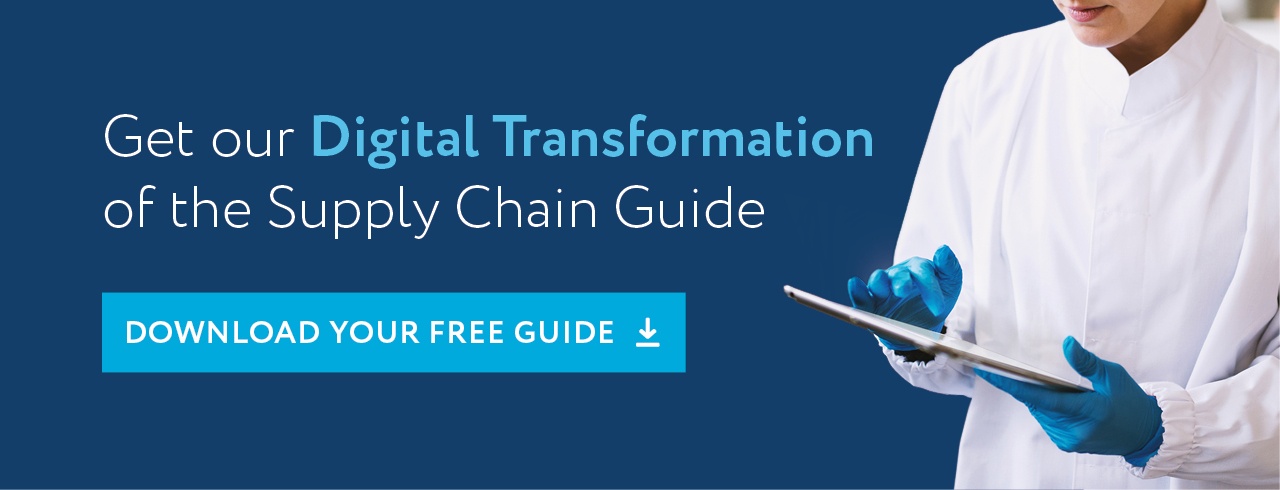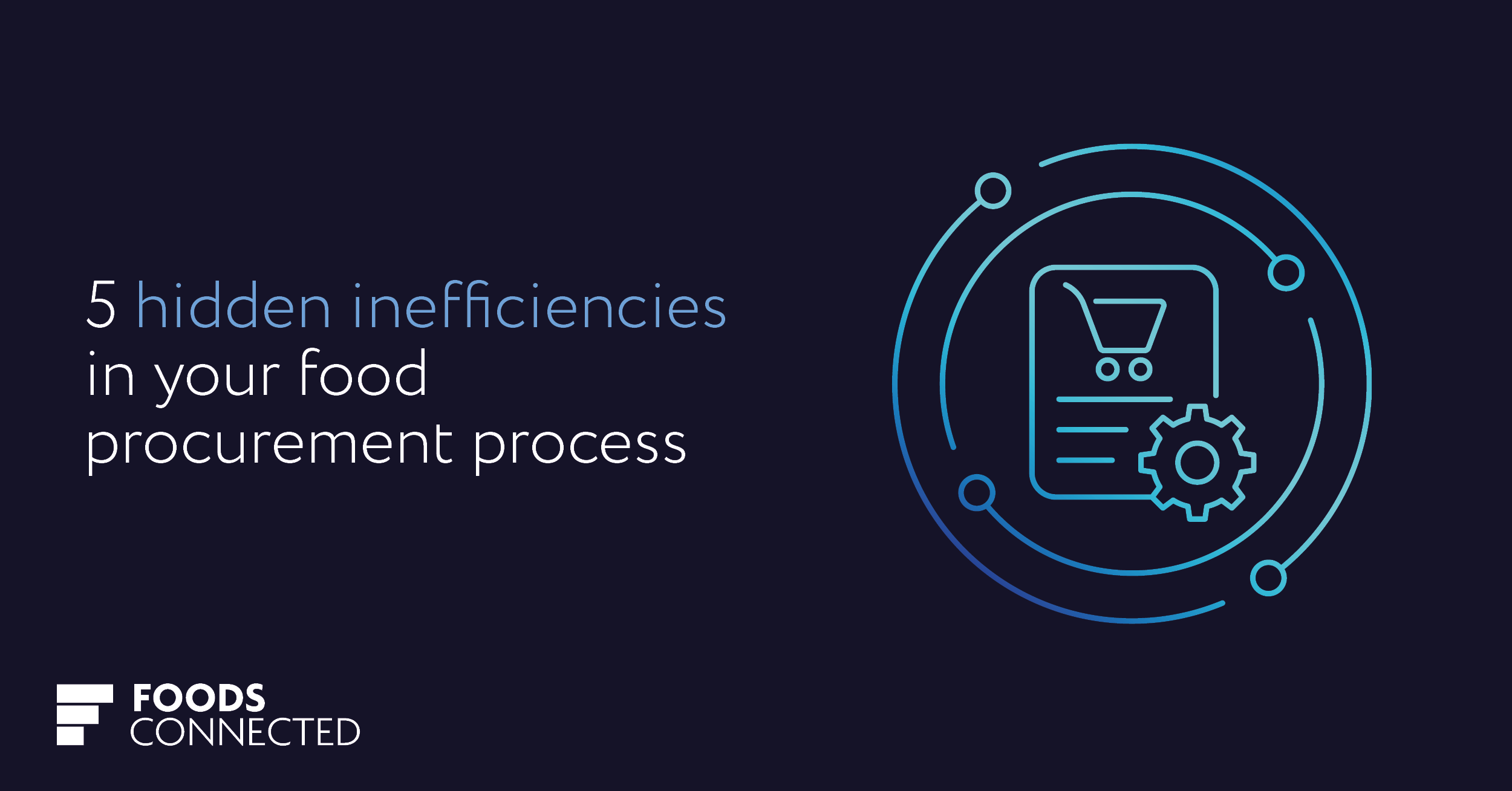The majority of suppliers will have been conducting product specifications for the entirety of their careers. Everyone understands that they are of the utmost importance for consumer safety, quality assurance, allergen control and improving overall traceability.
Despite this however, in 2021 US food safety bodies found that product recalls have continued to rise since 2018 with the leading cause being overlooked and undeclared allergens, an issue caused by poor specification of the product.
Therefore, if the importance of food specifications is known, how are issues continuing to rise?
Although several factors could attribute to this rise, the fact is that the traditional food specification process has become antiquated and slow, leading to mistakes throughout the supply chain.
Luckily, there is a solution to this issue simply by migrating to modern digital specification software.
In this piece, we will consider what digital food specification is and why it has become so popular as well as outline the top 5 ways moving to digital operations will transform your processes.

What is digital food specification software
As you will already know, food specifications are the detailed descriptions of food items, including everything from ingredients, allergens and nutritional information to appearance, manufacturing process and packaging.
They are highly detailed documents and need to be created with care, not only for legal reasons but also because they can have a major impact on consumers buying decisions.
As with most industries, we are seeing the rapid rise of digitalisation – and food specification is no different!
Digital food specification software is defined as software that enables you to manage all your product specifications on one online platform.
This means that you can create, send, and organise your specifications on one system, creating a more streamlined process.
In the past, this documentation would be handled through Excel spreadsheets, shared through email downloads, and could often become complicated due to the volume of data across different suppliers and sites.
Moving your specification process to a digital system creates greater control and transparency across your documentation, enabling your operation to run more efficiently.
Top 5 ways you can transform your processes using Digital Specification Software
Never lose track of or misplace your specifications (One source of truth).
Most companies or groups will be managing hundreds if not thousands of suppliers across different sectors, locations, and plants. It can become incredibly complicated to manage the data for each individual supplier and ensure standards are met if using traditional methods.
Online software will centralise all your information in one hub and make it easily accessible to everyone, no matter where they are.
You can organise your suppliers whichever way you wish making it easy to filter through contacts and manage specifications. There is no need for downloads, zip files and printouts, plus you can access your specification information effortlessly (both on or offline!) whether in the office or on the move and even on the factory floor.
Not only that, but you can instantly see whether your suppliers have completed their safety and quality documentation, where the blockages may be and the complete history of their documentation process. This becomes more prevalent when you consider that around 45% of businesses experience issues with compliance from some of their suppliers. Rather than wasting time chasing suppliers or tracking down the right data, you will immediately see where the issues are and have information at hand to resolve the situation.
Having this level of organisation is the biggest transformation you will see in your process when taking on a digital system. You will save time, and effort and reduce the opportunity for human error.
Optimise your time
One of the largest benefits you will see when digitalising your process is the amount of time you will save.
Modern software will completely remove the hefty and tiresome process of manual entries, and reminders. Rather than creating spreadsheets and making routine updates manually you will have a dynamic system that adapts to your working patterns.
When creating a specification using cloud-based software you can quickly add the required fields and instantly pull information from your supplier lists. You can use quick and handy search tools and filters as well as view spec history for greater transparency.
With the capability of advanced search, it takes a matter of seconds to scan through all your supplier documentation to filter and find exactly what you need. This can save an enormous amount of time when segmenting based on region, industry, and allergens, allowing you to build a more thorough specification process.
In some cases, businesses may have to access a specific data set as fast as possible, for example if there has been contamination in a certain site or an outbreak in a farming region. Advanced searching means that you can pinpoint those exact key locations instantly and minimise any potential risks.
Using software to manage your supply chain will automate many of the vital processes that can be overlooked and generate reminders to update information if a year has passed or to contact a specific supplier after a length of time. Converting to a digital process will remove the stress involved in tracking suppliers, free up your time to focus on more imperative tasks and form a key solution in creating a healthy, robust and consolidated supply chain.
Ensure consistency and set the standards for your specs.
Without creating a standardised process, it will be increasingly difficult for companies to control the quality of their end product.
With large teams and staff turnover plus the sheer number of specifications required, it is a challenge ensuring that all documents are up to the same standard and are consistent across the board.
With digital specification software, work is transparent. Any member of the team who has been granted access can view previous documents that have been sent, the information that was included and who received them to ensure a standard is maintained.
Specification software will also bring clarity to supplier history, highlighting whether they have met all the appropriate standards in the past and whether they have any outstanding checks or sign offs.
Easy to customise, replicate and manage
Traditionally the specification process could become confused and scattered due to each business’ and supplier’s individual approach. One supplier could have a completely different specification format to another making it almost impossible for a business to compare data and effectively manage their documentation.
Using Specification software however, a business can create a custom template that can be used with multiple suppliers ensuring consistency across their forms. These can be tailored in whatever way necessary but assures there is uniformity in your documentation, making it easier to manage your data.
As mentioned, large businesses are dealing with a vast number of suppliers daily from different sectors whether it’s meat, fish, fresh produce etc. Each of these will have extremely specific requirements on their specification and when using a software such as Foods Connected you will be able to easily create, customise and replicate your specs to ensure you have all the information you need from your suppliers.
When creating your specs you can add several different fields, including images of the product, dropdowns, detailed descriptions, and checklists; everything you need to ensure you are confident with your supply.
Creating detailed specifications could not be easier than with digital software allowing you to ask for as much or as little detail as you require with the simple click of a button. These can then be amended or duplicated with minimal effort saving you time and resource.
Speedy reports
When it comes to the end of the week, month, quarter, or year many managers can be left with the mundane task of consolidating an enormous amount of data which then needs to then be transferred into their reports.
Doing this using a historic system will not only waste time but also can become complicated if mistakes have been made somewhere down the line and if any information is missing.
Digital systems are dynamic. They will allow you to generate reports any time and tailor them to the data you want to see. This will save time and will also highlight opportunities to improve your processes and efficiency.
With a digital system all your data is stored in one central location. This means that not only can you view recent reports, but you can also create comparison documents to get a better idea of your performance over time and compare various suppliers.
Key functions to look for in your Digital Specification Software
As with all systems, not all software services are created equal, some offering greater functionality or wider integration options, and others more fundamental and affordable.
Although there is a wide scope on what is available there are core functionalities you must look for when choosing your digital specification software.
Specification Customisation: You need a tool that fits your business and suppliers, not one that will force you to adapt your processes to fit its requirements. Specifications are an incredibly important piece in the supply chain and therefore you need the ability to change different fields in your forms to be confident that you are getting all the information you need from your suppliers.
Simple sharing: Be sure that whatever system you use allows you to share specs with your suppliers simply and monitor their progression. A software which prompts your suppliers and automatically notifies you of changes is an added bonus for time efficiency.
Editing history: As mentioned, Specifications are of high importance, you want to control who can access your documents and see exactly what changes have been made for complete transparency.
Reporting: The benefit of digitisation and cloud-based software is that it stores all your data in one location, making it easy to access the information you want. This is the ideal way to build real-time reports and view detailed analytics. Therefore, you want a software that makes this easy and will display your data in a simple user-friendly format.
Advanced search: With a digital system you have greater ability to store and manage your data. With this you will also want to ensure there is an effective way to filter through and access key pieces of information. Without such a capability your system will become ineffective and slow your processes down further.
Transform your Specification process with Foods Connected
At this stage it is abundantly clear that any modern food business should be utilising digital supply chain software, however this can seem daunting if you have become accustomed to traditional methods.
However, with a modern solution like Foods Connected, this transition is effortless.
With experienced teams from the Food Industry, implementing a software like this can be a breeze – an affordable one at that! Industry experts will understand your pain points and tailor your project delivery to match your objectives and resources.
You will have the ability to create specifications in a format that is straightforward to view, track and update. You can build any type of specification in a way that makes sense for your business and manage these from a single centralised space.
To find out more about Foods Connected and our digital specification tool you can learn more here and check out our detailed brochure here.
Need to speak to a human? Why not book in for your free remote demo where an experienced member of our team will be able to walk you through the solution and discuss your specific needs.
Frequently Asked Questions
What is supply chain management software?
Supply chain management software will align all stages of your supply chain and enable you to manage your operations on one easy to use mobile system. Users will be able to manage and store their supplier information from farm to fork in one visual location which will make it simple to ensure complete traceability in your products.
Systems such as Foods Connected will give you everything you need to manage your supply chain in one hub.
Will it take long or involve a lot of effort to make my traditional system digital?
Simply put no. With Foods Connected you can build custom forms and templates that are identical to what you currently use making it a simple transfer of data. Also, you will be supported by a group of experts in the industry who will help you implement the system.
What other functions are available with supply chain management software?
This will vary depending on the platform you choose and whether they are focused on one specific industry or field. Generally, you can expect modules relating to food safety and quality, compliance, traceability, procurement, and CSR as well as specifications. Foods Connected is unique in that it covers each of these areas from farm to fork in a connected hub – with smart tools that track and talk to each other.
Natalie Thorpe
A graduate of Letterkenny Institute of Technology, Natalie studied Visual Communication and Graphic Design. When she's not creating up new designs for company materials and branding, writing, compiling marketing plans or implementing new UX strategies, you'll find her roaming a deserted beach in search of her disappearing dog, or soaking up different cultures on her globetrotting adventures!
Stay up to date
Stay up to date
Browse Posts
- October 2025
- September 2025
- August 2025
- July 2025
- June 2025
- May 2025
- April 2025
- March 2025
- February 2025
- January 2025
- December 2024
- November 2024
- October 2024
- September 2024
- August 2024
- July 2024
- June 2024
- May 2024
- April 2024
- March 2024
- February 2024
- January 2024
- December 2023
- November 2023
- October 2023
- September 2023
- August 2023
- July 2023
- June 2023
- May 2023
- April 2023
- March 2023
- December 2022
- November 2022
- October 2022
- September 2022
- August 2022
- July 2022
- June 2022
- May 2022
- April 2022
- March 2022
- February 2022
- January 2022
- December 2021
- November 2021
- October 2021
- August 2021
- July 2021
- June 2021

/Blog%20Headers/shutterstock_1927957907%20(1).jpg)
/Blog%20Headers/shutterstock_1845178195%20(2).jpg)
/Blog%20Headers/shutterstock_2473376713.jpg)
/Blog%20Headers/shutterstock_2212313917.jpg)
/Blog%20Headers/shutterstock_2133827717%20(1).jpg)

.png)

/Blog%20Headers/Supply%20chain%20resilience%20Blog%20Header%20.jpg)
/1.%20HubSpot%20Images/Roger%20New%201a%20(1)%20(1).jpg)
.jpeg)

/Blog%20Headers/New%20Calorie%20Labelling%20Regulations%20in%20England%20What%20Will%20it%20Mean%20for%20your%20Business.jpg)

.jpg)
/Blog%20Headers/Hiring%20Strategies.jpg)
/Blog%20Headers/Blog%20header_SEO_How%20AI%20detects%20food%20fraud.jpg)
/Blog%20Headers/freshpak%20header.jpg)
/Blog%20Headers/FSMA%202024%20update%20Blog%20header.jpg)
/Blog%20Headers/Blog%20header_How%20AI%20is%20making%20supply%20chains%20more%20efficient.jpg)